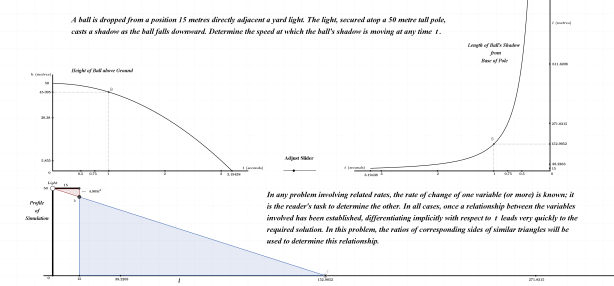Surface areas of curved 3-dimensional solids tend to be much more difficult for students to conceptualize than those whose sides do not stray from a “level” plane. These will eventually be addressed but we will first discover how to calculate lengths of curves.
The circle will once again be called upon to initiate this exploration; the image below illustrates, in part, the method of exhaustion that Archimedes utilized to arrive at his estimate for π.

Click on the link here to interact with what Archimedes revealed.
……..and now this. Was Archimedes wrong???

Source: math.stackexchange.com
If the fellow above had joined pairs of points at each successive corner with a line segment (hypotenuse) and based his calculation for circumference on the sum of those, he would have found that Archimedes was correct all along.
Arc Length Formula
As Δs approaches zero in this exploration, its length becomes a more accurate estimate for the arc length near the “point” of tangency (there are always two points in very close proximity). The end result through the limiting process shown directly below is the formula for arc length.

Its always beneficial for students to work through several examples to cement their understanding of new concepts and related procedures; my preference is to provide examples that are already familiar to them. Calculating arc length (in this case) can then serve as a verification and acceptance of the new concept is achieved with confidence. The offering directly below and the link that follows connects the arc length formula to the Pythagorean theorem.

The formula for arc length is based on the Pythagorean theorem; it is therefore not surprising that they produce the same lengths on linear functions.
The real power of the formula for arc length lies in its applications to curves. Since students have known the circle’s circumference for several years, it is appropriate to now derive 2πr using our new tool. This is shown below and once again brings trigonometric substitution into play.
Circumference of the Circle

Once the circle’s circumference has been established using the arc length formula, the integration process can be further solidified by using arc length to once again calculate the circle’s area.
The formula for arc length will once again be employed in deriving the formulas for surface area of the sphere and cone.
Thanks for reading.



















